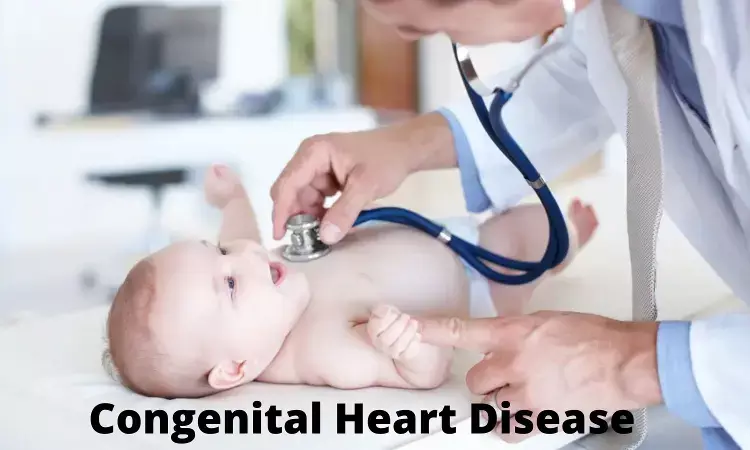- Home
- Medical news & Guidelines
- Anesthesiology
- Cardiology and CTVS
- Critical Care
- Dentistry
- Dermatology
- Diabetes and Endocrinology
- ENT
- Gastroenterology
- Medicine
- Nephrology
- Neurology
- Obstretics-Gynaecology
- Oncology
- Ophthalmology
- Orthopaedics
- Pediatrics-Neonatology
- Psychiatry
- Pulmonology
- Radiology
- Surgery
- Urology
- Laboratory Medicine
- Diet
- Nursing
- Paramedical
- Physiotherapy
- Health news
- Fact Check
- Bone Health Fact Check
- Brain Health Fact Check
- Cancer Related Fact Check
- Child Care Fact Check
- Dental and oral health fact check
- Diabetes and metabolic health fact check
- Diet and Nutrition Fact Check
- Eye and ENT Care Fact Check
- Fitness fact check
- Gut health fact check
- Heart health fact check
- Kidney health fact check
- Medical education fact check
- Men's health fact check
- Respiratory fact check
- Skin and hair care fact check
- Vaccine and Immunization fact check
- Women's health fact check
- AYUSH
- State News
- Andaman and Nicobar Islands
- Andhra Pradesh
- Arunachal Pradesh
- Assam
- Bihar
- Chandigarh
- Chattisgarh
- Dadra and Nagar Haveli
- Daman and Diu
- Delhi
- Goa
- Gujarat
- Haryana
- Himachal Pradesh
- Jammu & Kashmir
- Jharkhand
- Karnataka
- Kerala
- Ladakh
- Lakshadweep
- Madhya Pradesh
- Maharashtra
- Manipur
- Meghalaya
- Mizoram
- Nagaland
- Odisha
- Puducherry
- Punjab
- Rajasthan
- Sikkim
- Tamil Nadu
- Telangana
- Tripura
- Uttar Pradesh
- Uttrakhand
- West Bengal
- Medical Education
- Industry
Machine Learning Algorithm Enhances Detection of Critical Congenital Heart Disease: Study

Researchers have found that incorporating machine learning (ML) algorithms into pulse oximetry screenings significantly improves the detection of critical congenital heart disease (CCHD) in newborns. This innovative approach addresses the limitations of traditional oxygen saturation (Spo2) screening, particularly in identifying conditions like coarctation of the aorta (CoA). This study was published in the Journal of American Heart Association by Heather S. and colleagues.
Traditional Spo2 screening has not been effective in early detection of CCHD, often missing crucial diagnoses such as CoA. To enhance detection rates, researchers developed an ML pulse oximetry algorithm that integrates perfusion data and radiofemoral pulse delay. This study aimed to evaluate the effectiveness of this advanced screening method.
The study enrolled 523 newborns from six different sites, including those with and without CCHD. Researchers recorded simultaneous pre- and postductal pulse oximetry readings. The ML algorithms were tested under various conditions: with one versus two time points and with or without pulse delay data. The sensitivity, specificity, and area under the receiver operating characteristic (ROC) curve were compared between the traditional Spo2-alone method and the new ML algorithms.
• Out of the 523 newborns, 317 had no congenital heart disease (CHD), 74 had CHD, and 132 had CCHD, including 21 cases of isolated CoA.
• The Spo2-alone method missed 26.2% of CCHD cases. When focusing on patients with both two time-point measurements and pulse-delay data (65 without CHD, 14 with CCHD), the ML algorithm significantly improved detection rates.
• The ML model incorporating two time points and pulse delay data achieved a sensitivity of 92.86% for CCHD detection, compared to 71.43% with Spo2 alone.
• For CoA, the sensitivity improved from 0% to 66.67%.
• All ML models maintained 100% specificity.
• The area under the ROC curve for CCHD detection increased from 0.83 to 0.96, and for CoA detection from 0.48 to 0.83, both showing significant improvements (P=0.03).
The study highlights the substantial benefits of using an ML algorithm that incorporates oxygenation, perfusion data, and pulse delay at two time points for detecting CCHD and CoA in newborns. The significant improvement in sensitivity and specificity indicates that this approach can greatly enhance early diagnosis and intervention, potentially saving lives and reducing long-term health complications associated with delayed diagnosis.
In conclusion, ML-enhanced pulse oximetry that combines multiple data points and time measurements significantly improves the detection of CCHD and CoA in newborns within the first 48 hours of life. This advanced screening method holds promise for better early diagnosis and improved outcomes for infants with these critical conditions.
Reference:
Siefkes, H., Oliveira, L. C., Koppel, R., Hogan, W., Garg, M., Manalo, E., Cresalia, N., Lai, Z., Tancredi, D., Lakshminrusimha, S., & Chuah, C.-N. (2024). Machine learning–based critical congenital heart disease screening using dual‐site pulse oximetry measurements. Journal of the American Heart Association, 13(12). https://doi.org/10.1161/jaha.123.033786
Dr Riya Dave has completed dentistry from Gujarat University in 2022. She is a dentist and accomplished medical and scientific writer known for her commitment to bridging the gap between clinical expertise and accessible healthcare information. She has been actively involved in writing blogs related to health and wellness.
Dr Kamal Kant Kohli-MBBS, DTCD- a chest specialist with more than 30 years of practice and a flair for writing clinical articles, Dr Kamal Kant Kohli joined Medical Dialogues as a Chief Editor of Medical News. Besides writing articles, as an editor, he proofreads and verifies all the medical content published on Medical Dialogues including those coming from journals, studies,medical conferences,guidelines etc. Email: drkohli@medicaldialogues.in. Contact no. 011-43720751


